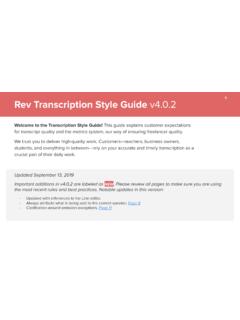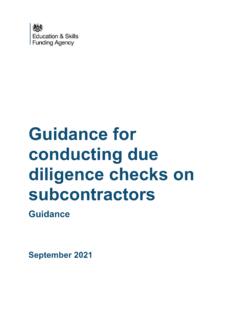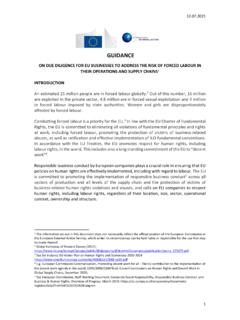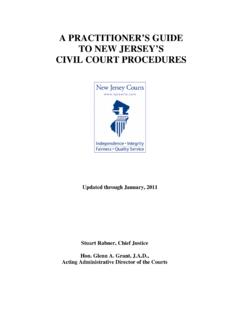Transcription of Rev Transcription Style Guide v3
1 Welcome to the Transcription Style Guide ! The following is the definitive Guide for Transcription at Rev. This Guide also explains our grading system, our way for you to get constructive feedback on your completed trust you to deliver high-quality work. Our customers teachers, business owners, students, and everything in between rely on your accurate and timely Transcription as a crucial part of their daily July 7, 2017 Important additions in are labeled as NEW. Please review all pages to make sure you are using the most recent rules and best Transcription Style Guide are two categories of rules Accuracy and - Are you correctly hearing and transcribing what words were said and who said them? - Are you correctly communicating those words and notations in a way that is easily readable and digestible?
2 Both categories have major errors* and minor errors. Errors may lead to a lowered grade that will impact your Revver metrics. Take special care in proofing your work before * Major errors are the most common reasons that customers return files to Rev to be of Rules5 - Excellent Near perfect May contain a few errors that do not alter the meaning of the original audio. 4 - GoodCustomer ready Errors are more frequent or noticeable but do not change the meaning of the original audio. 3 - Fair Near customer ready Errors are present that would lead to customer confusion. This includes wrong words, additions or omissions that change the meaning of the original audio. 2 - PoorNot customer ready Transcript reflects severe carelessness or lack of understanding of the Style Guide .
3 1 - Very PoorUnusable Transcript is a poor representation of the original audio, verbatim was not used when requested, or the transcript is incomplete or content is omitted.* A grade consists of scores on two dimensions: Accuracy and * If you submit incomplete work, your pay for the job will be removed and your account may be closed after Support or more major errors may result in a 1 - 4. One or more minor errors may result in a 2 - ScaleMajor ErrorsMinor ErrorsAccuracyPrecisionSpellingWrong WordsInaudiblesAddition / Omission of ContentVerbatimFormattingDictationRev default Style (non-verbatim)Notation tags (inaudible / crosstalk)Punctuation / SymbolsProvided speaker labelsInferred speaker labelsHandling missing audio / foreign language4 IndexAlways transcribe exactly what is said, excluding speech disfluencies in non-verbatim files.
4 Although spoken word is not always grammatically correct, your Transcription must preserve the integrity of the original speech. Please do not write what you think the speaker meant to paraphrase or omit substitute rearrange the order of correct or edit a speaker s change spoken contractions ( do not don t or don t do not) change formal speech into an informal contraction ( going to gonna) : Changing informal contractions* into formal speech is optional in non-verbatim jobs( gonna going to). If you do, please be consistent in your corrections throughout your : Correct egregious phonetic and pronunciation errors that inhibit readability or : if a speaker pronounces refrigerator, washer and dryer as refrigurator, washar and dryear , please use the correct word and spelling based on your context of the * Informal contractions are short forms of words that people use while speaking casually ( ain t, gonna, gotta, kinda, cause (instead of cuz/coz/cos), wanna)Major Accuracy ErrorNEWA lways use context clues to write down the correct word or phrase.
5 If you are unsure of a word or phrase, complete thorough research or ask for a second opinion on the there vs their vs they re you re vs your its vs it s Always use the appropriate word, paying special attention to homophones. aerospace vs arrow space Botox vs boat ox Always use context clues to write down the appropriate word. This is especially important for proper nouns or industry terminology. looked vs loved kissed vs killed Take your time while transcribing a changed word could result in a drastic change in the meaning of a WordsMajor Accuracy ErrorAddition of Content is transcribing content that is not present in the audio. Never paraphrase or write what you think the speaker meant to say. This is a major error that changes the meaning and integrity of a of Content is leaving words or phrases out of a transcript.
6 You should never paraphrase or omit words unless they are filler words in a non-verbatim transcript. It is always better to use an inaudible tag instead of guessing or skipping content. Always capture all conversations ( off topic, crew chatter) with as much diligence as the rest of the audio. We do not judge relevance. All discernible speech should be captured, with the exception of simultaneous background audio that is clearly unrelated to the main discussion ( a conversation at another restaurant table or a TV playing in the background during an interview).7 Addition / Omission of ContentMajor Accuracy ErrorNEWSome customers request verbatim transcripts. In verbatim files, you must transcribe exactly what you hear, including filler words, stutters and repetitions.
7 Only the following non-speech speaker (laughs) or (laughing) (affirmative) or Mm-mm (negative) (affirmative) or Uh-uh (negative) other non-speech speaker sounds, such as (coughs) or (sneezes). use parens for non-speech speaker sounds. Do not use your own notation ( [laughs] or **laughs**) background atmospheric and non-mouth sounds ( clapping, paper rustling, dog barks, car honks)8If you ve claimed a verbatim job, it will be noted in the upper right menu of the Accuracy ErrorNEWNEW9 Tip: Use our built-in spelling and grammar check by right clicking on underlined or highlighted spelling at all times, even if the speaker has a non-American research words, phrases and proper nouns (names, companies, titles, etc.) you are unfamiliar research the proper capitalization of terms, even if you are familiar with the spelling ( iPhone, UCLA, SaaS) customers provide a glossary that can be found in the left-hand menu of the editor please refer to the glossary while Accuracy ErrorAn inaudible tag should be used when unintelligible or inaudible word(s) are spoken.
8 This may happen due to difficult audio quality, a sound (such as a car horn) obscuring the main speaker, or recording issues. An inaudible should never be used in place of many inaudibles is too many? If you are using an excessive number of inaudibles in a transcript (to the point where the transcript would be unusable to the client), unclaim and report the file so the Support team can reach out to the client to see how to : Inaudibles can be solved with help from Lend an Ear. You can share your audio file and helpful Revvers will listen in and try to hear the missing word(s).InaudiblesMinor Accuracy ErrorOccasionally customers dictate instructions to format the Transcription while they are speaking. These instructions should be followed when possible but never customer requests for spoken directions such as new paragraph, comma, period or bullet point (use a dash).
9 Do not type out the Rev does not support text formatting in the Editor, ignore requests such as bold, italics, underline or complete guidelines and instructions in our help center Formatting ErrorIf you encounter difficult audio, use one of the four notation tags below. Do not create and use a notation tag not listed below.[inaudible hh:mm:ss]Use when unintelligible or inaudible words are stated. Equivalent to a blank in medical Transcription .[crosstalk hh:mm:ss]Use when multiple people speaking over each other causes any one of the speakers to become unintelligible. Continue to transcribe what is discernable. Example[foreign language hh:mm:ss]For any non-English portions of audio, please indicate where they begin with a timestamp and either the name of the language (if known) or simply foreign language.
10 Do not transcribe non-English a translator is speaking on a respondent's behalf, there is no need to denote [foreign language hh:mm:ss] every time that the respondent speaks. Example[phonetic hh:mm:ss] When you are unable to research a definitive spelling of a proper noun or industry terminology, include your attempted spelling in brackets with a timestamp. This allows a customer to easily double check the audio during review. Only use the phonetic tag for the first instance of the word and be consistent with your attempted spelling in later not use this tag when you are unsure of what was TagsMajor Formatting ErrorIf a customer has provided speaker labels, you must use them if:1)the speaker is identified in the audio ( My name is Arnold )2)you can infer who is speaking if another speaker introduces the name ( What do you think, Gustav?








